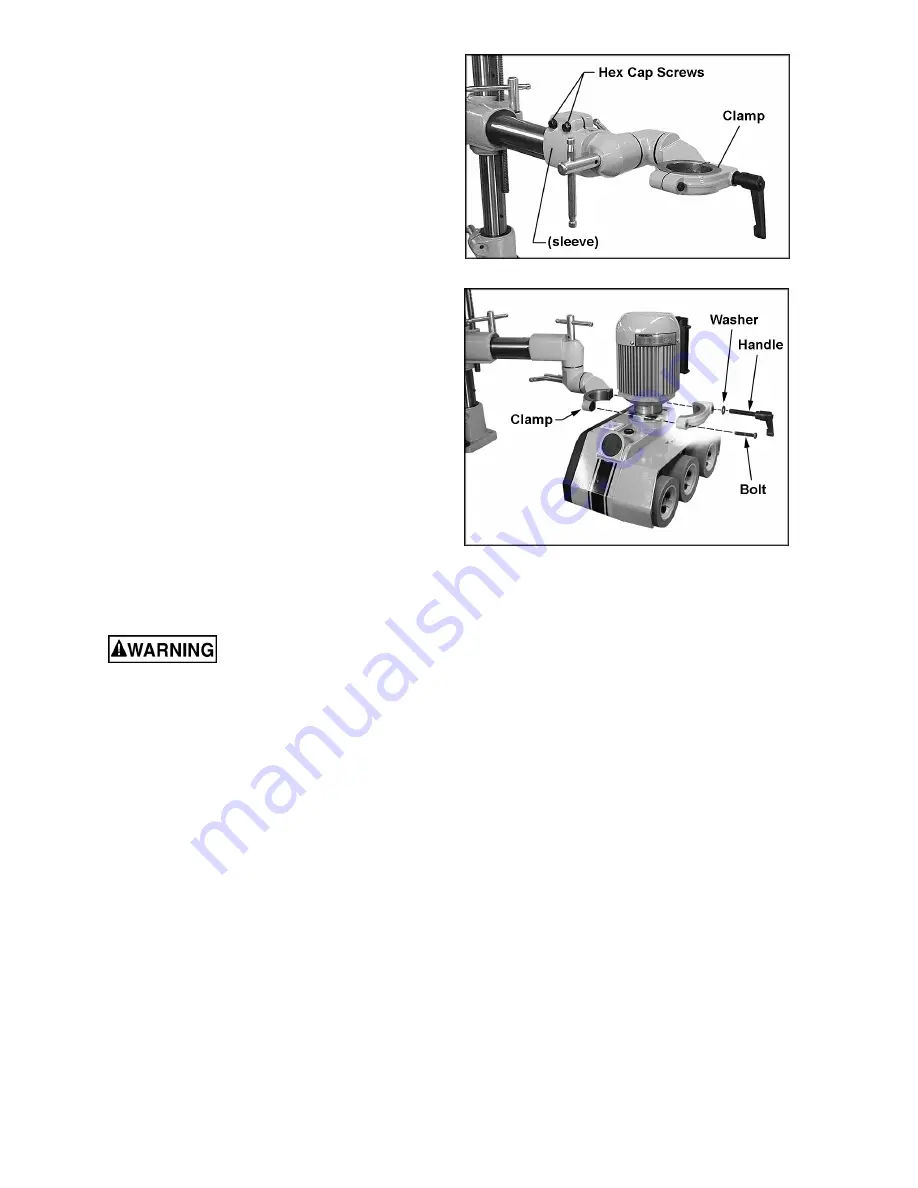
11
17. Mounting the feeder body may be easier if
you loosen the two hex cap screws (shown
in Figure 8) and rotate the over arm cone
assembly so that the clamp is toward the
bottom, as shown in Figure 9. Loosen the
handles and rotate the cones as needed to
get the clamp in position. Re-tighten the
screws and handles before mounting the
feeder body.
18. Unscrew the bolt and the handle (Figure 9)
from the clamp, and remove the outer half of
the clamp.
19. Position the neck of the stock feeder into the
inner half of the clamp, then attach the outer
half of the clamp. Re-install the bolt and
handle and tighten both of them gradually
and in turns, until the clamp is evenly tight
over the stock feeder neck. NOTE: The
seam between the two halves of the clamp
will not close entirely.
The handle (Figure 9) is adjustable. To
tighten it, rotate the handle clockwise, then
lift
out
on
the
handle,
rotate
it
counterclockwise on the pin and release it,
making sure it re-seats itself on the pin.
Continue this procedure until tight. (This
adjustable feature allows the handle to be
re-positioned at any time while remaining
tight.)
Grounding Instructions
Electrical connections must
be made by a qualified electrician in
compliance with all relevant codes. This
machine must be properly grounded to help
prevent electrical shock and possible fatal
injury.
The PF-series Feeders are available in voltages
ranging from 115 to 460, depending on the
model you purchased. Make sure the voltage of
your power supply matches the specifications on
the motor plate of the stock feeder.
The Stock Feeder is not supplied with an
electrical plug. You may either connect an
appropriate UL/CSA listed plug, or “hard-wire”
the machine directly to a service panel.
If the stock feeder is to be hard-wired to a panel,
make sure a disconnect is available for the
operator. Also make sure the fuses have been
removed or the breakers have been tripped in
the circuit to which the stock feeder will be
connected. Place a warning placard on the fuse
holder or circuit breaker to prevent it being
turned on while the machine is being wired.
Figure 8
Figure 9
The stock feeder must comply with all local and
national codes after being wired.
This machine must be grounded. In the event of
a malfunction or breakdown, grounding provides
a path of least resistance for electric current, to
reduce the risk of electric shock to the operator.
Improper connection of the equipment-grounding
conductor can result in a risk of electric shock.
The conductor, with insulation having an outer
surface that is green with or without yellow
stripes, is the equipment-grounding conductor. If
repair or replacement of the electric cord or plug
is necessary, do not connect the equipment-
grounding conductor to a live terminal.












































